|
NATIONAL PARK SERVICE
Park Structures and Facilities |

|
BOATHOUSES and LANDINGS
BOATHOUSES which do not incorporate other park facilities are the exception rather than the rule. Structural facilities providing for boating and bathing are so often housed under one roof, resulting in a combination building designated a waterfront building, that it might have been quite as reasonable to institute one such classification in lieu of the two actually used. Sometimes linked with the boathouse, is a shelter, effecting increased usefulness to the boating public.
In no other park building is the foundation of such importance as in the boathouse. It can be only as long-lived as its substructure, and the hazards of high water and swift current, and the threat from ice in northerly climates, should be appraised and guarded against in construction. Here economy in construction is by no means to be considered a virtue below the high water level.
The boathouse proper implies space allocation for the storage of boats, for their painting and repair, and lockers for motors, oars, paddles and other boating gear, as well as the effects of the boaters while they are on the water. Inclusion of lounge, office space, and shower and toilet rooms depends largely upon the elaborateness of conception of the boathouse, its size, or its remoteness from such facilities elsewhere provided in the park.
In instances where the boathouse is built on a lake or river of widely fluctuating water level, due to tide or flood conditions, it must be built out from the shore line to accommodate the low water stage. In such cases an approach runway out from the shore line at high water is essential.
Some form of landing or dock is usually auxiliary to the boathouse. This may extend out to deep water to permit the mooring of larger craft, or merely to reach beyond the shore line at low water. Again, the landing may be more useful as a platform paralleling the boathouse on the water front side. Especially is this desirable where canoes must be pulled out of the water and berthed under cover when not in use. Where the water stage is variable within limitations such a dock or incline is often hinged to the boathouse structure and its outer edge permitted to float, so that the inclination varies with the rise and fall of the water level. Too wide a variation in water level will naturally preclude the use of such a landing. Another provision to meet the exigencies of a changing water level is a stepped landing. Rollers are especially useful in connection with an incline, which when steep and drenched with water, offers uncertain footing to those straining to haul a heavy boat ashore.
In instances of broad shallow beaches and varying shore line, a floating dock for mooring boats may be the best solution. Such a facility may or may not incorporate slips for small craft. Floated by means of logs, kegs, or other buoyage, it is connected with the shore by a runway. There is the advantage of mobility, for such a pier can be shifted about as conditions may require. Secure anchorage is vital to a landing of this type.
It is highly desirable to remove canoes from the water when not in actual use, and to store them indoors. It is usual to provide racks three tiers high for this purpose. The equivalent of barn doors on the water side of the boathouse gives the fullest possible opening to the platform or incline. The moving of canoes in and out with a minimum of damage to them is made possible by such an arrangement. Rowboats, other than delicate racing shells, are customarily kept in the water during their season of use and are berthed under shelter only out of season. Slips for each rowboat are, of course, the ideal provision.
The floors of the boathouse proper and of docks, runways and inclines in connection should be of woods that do not deteriorate rapidly when subjected to alternate drenching and drying out in the sun. Ample natural ventilation, and floor boards spaced well apart, will facilitate drying out and check the tendency to rot out quickly, so omnipresent in water front construction.
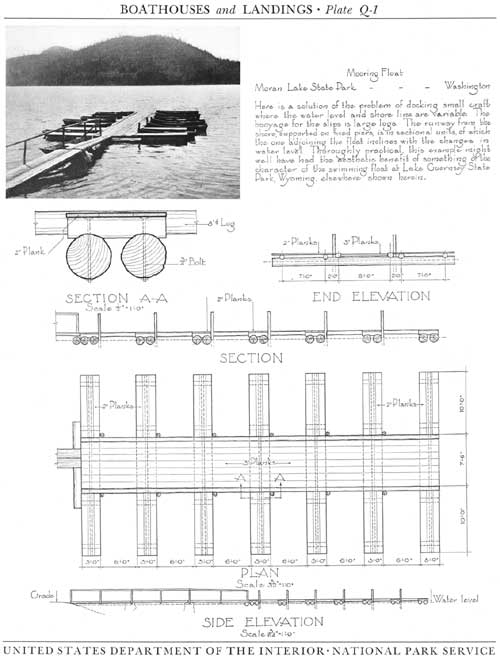
|
| Plate Q-1 (click on image for a PDF version) |
Boat Landing, McKinley Woods, Cook County Forest Preserve, Illinois
This water gateway is here pictured at a disadvantage, due to its state of incompletion. The log seats indicated in plan when added will agreeably interrupt the blank expanse of rigid stone work. Time and flood should do their part to break in this newcomer to the rough ways of the water front.
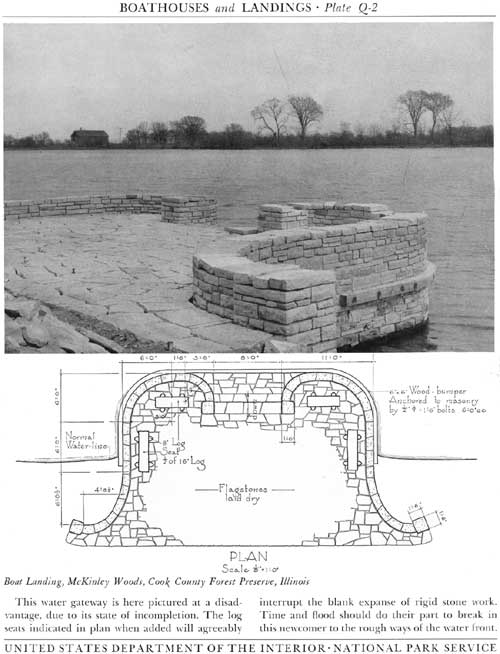
|
| Plate Q-2 (click on image for a PDF version) |
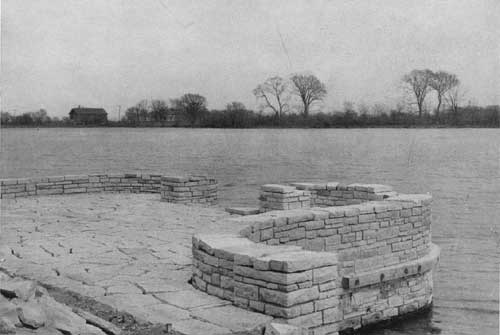
|
| McKinley Woods, Cook County Forest Preserve, Illinois |
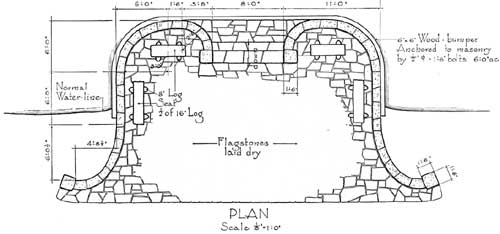
|
| McKinley Woods, Cook County Forest Preserve, Illinois |
Boathouse, Woodlands Lake, Westchester County, New York
In the spirit of the restaurant concession at this park, shown elsewhere, and connected with it by the covered passage to the left in the illustration above. Boat storage is provided at the water level and both open and sheltered lookout space at the level above.
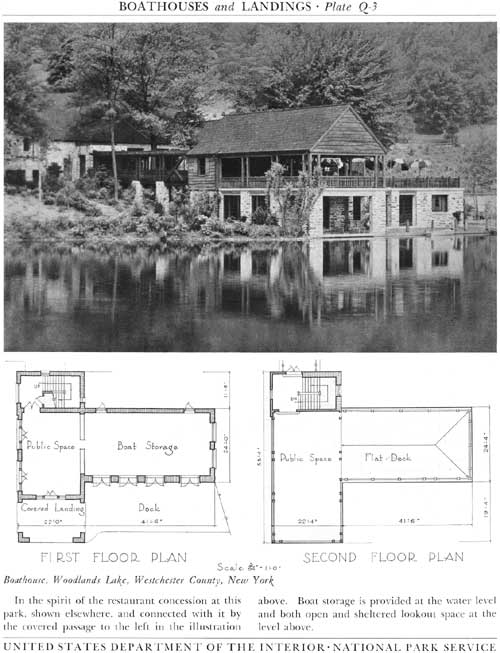
|
| Plate Q-3 (click on image for a PDF version) |
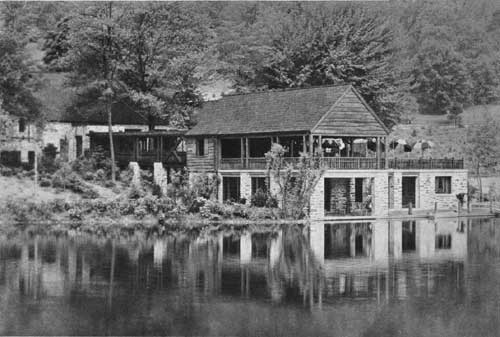
|
| Woodlands Lake, Westchester County, New York |
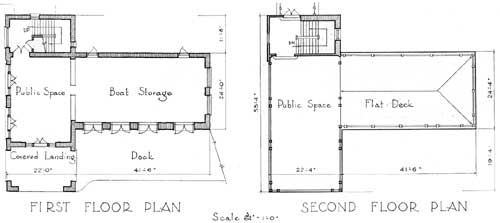
|
| Woodlands Lake, Westchester County, New York |
Boathouse, Tecumseh Lake State Park, Oklahoma
Roofed-over storage for boats, concession — with open dining room, and observatory reached by a picturesque outside stairway, combine to produce a building of most agreeable form. The broad, stone-paved terrace on the lake side bordered by stone wall seems very much a part of the structure itself.

|
| Plate Q-4 (click on image for a PDF version) |
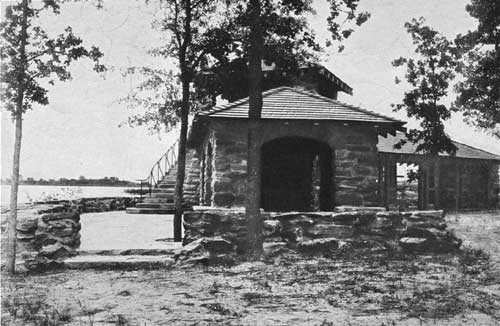
|
| Tecumseh Lake State Park, Oklahoma |
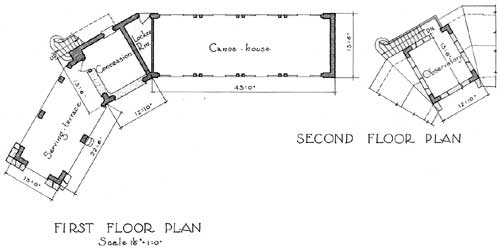
|
| Tecumseh Lake State Park, Oklahoma |
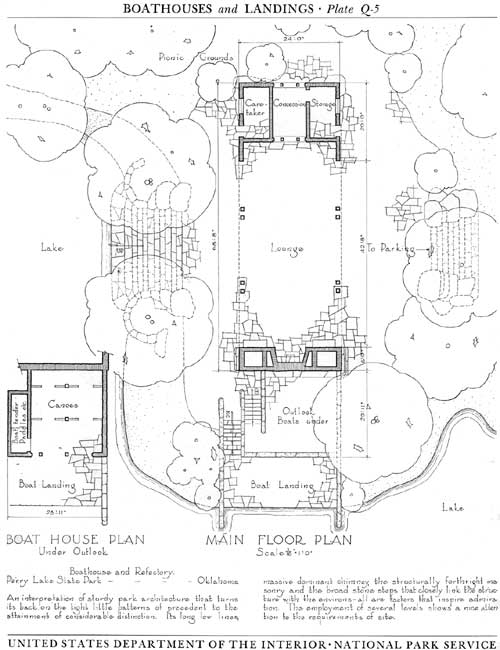
|
| Plate Q-5 (click on image for a PDF version) |
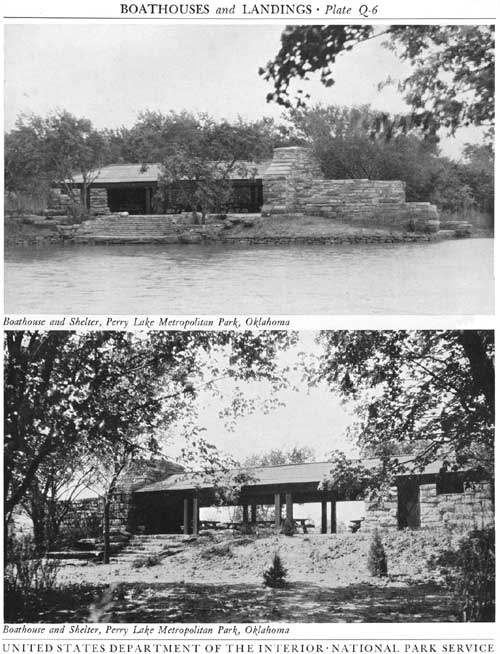
|
| Plate Q-6 (click on image for a PDF version) |
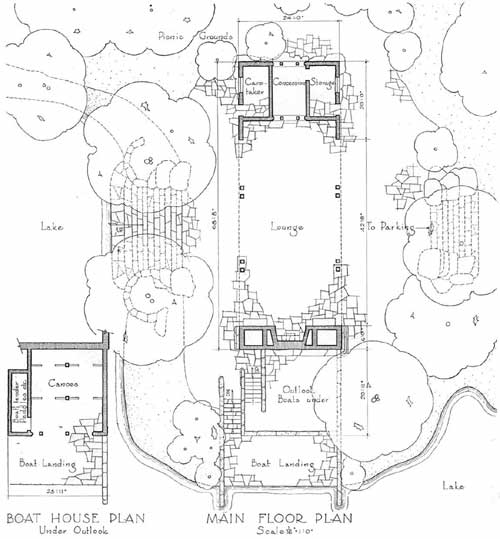
|
| Boathouse and Shelter, Perry Lake Metropolitan Park, Oklahoma |
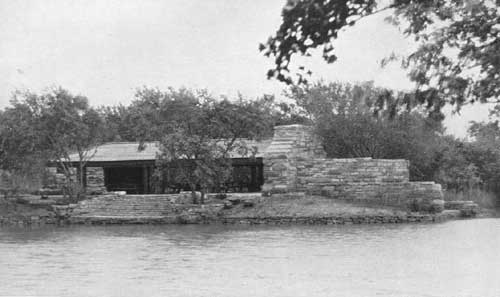
|
| Boathouse and Shelter, Perry Lake Metropolitan Park, Oklahoma |

|
| Boathouse and Shelter, Perry Lake Metropolitan Park, Oklahoma |
Boathouse, Caddo Lake State Park, Texas
This boathouse of log construction, on a lake subject to flood stages, meets this condition by the provision of a runway to the high water shore line. Opposite this, a landing pier is extended to meet the condition of low water. Both enclosed storage and merely roofed shelter for boats are furnished. The building is well suited to its wooded location. Masking of the piling by a curtain wall of vertical poles or slabs to well below the low water level gives substantial appearance to the substructure.
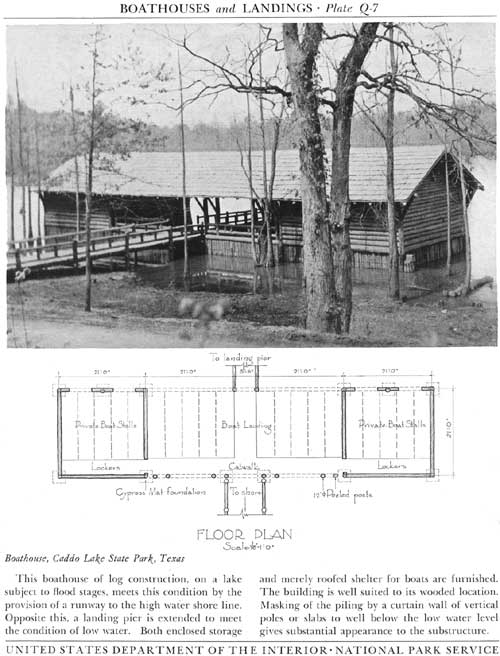
|
| Plate Q-7 (click on image for a PDF version) |
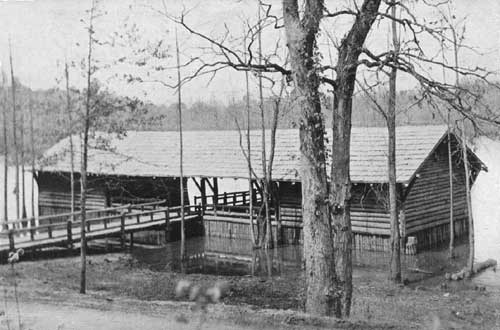
|
| Caddo Lake State Park, Texas |

|
| Caddo Lake State Park, Texas |
| <<< Previous | <<< Contents>>> | Next >>> |
park_structures_facilities/secq.htm
Last Updated: 5-Dec-2011